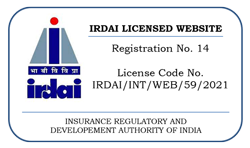Term insurance is a type of life insurance that provides coverage for a specific period in exchange for a fixed premium. If the insured person dies during this time, the beneficiary receives a death benefit. This payment helps cover living expenses, offering financial support when it’s most needed.
Level term insurance keeps the death benefit the same for the entire policy duration and is the most common type.
Decreasing term insurance has a death benefit that reduces over time, typically at a fixed rate. Its premiums are usually lower than those of level term insurance and remain constant. This option is ideal for covering debts.
Increasing term insurance features a rising death benefit, also at a set rate. The premium may vary. This type is useful for meeting financial goals, such as planning for a child's future or preparing for marriage, as it adjusts to changing needs.
What Is Level Term Insurance and Who Should Choose It?
Level term life insurance is a type of policy that offers a fixed death benefit and consistent premiums for a set period. It’s an affordable way to protect your family’s financial future and aids in financial planning.
Understanding Decreasing Term Insurance for Mortgage Protection
Decreasing term insurance is a policy that provides coverage with a death benefit that decreases over time, often aligned with a mortgage balance. It's designed to protect mortgage obligations, ensuring that beneficiaries can pay off the loan if the policyholder passes away, making it a cost-effective option for mortgage protection.
The Benefits of Increasing Term Insurance for Long-Term Planning
An increasing term insurance plan ensures that the sum assured rises by a set amount each year. This growth accounts for inflation and future financial needs, allowing for adequate coverage as circumstances change. The sum assured is determined based on these factors, providing financial security over time.
Comparing Premiums and Coverage in Different Term Insurance Types
When comparing premiums and coverage in different types of term insurance, it's essential to consider several factors. Level term insurance offers consistent premiums and coverage throughout the policy's duration, making budgeting easier. Decreasing term insurance features lower premiums as coverage diminishes, making it ideal for mortgage protection. Conversely, increasing term insurance has higher initial premiums but provides rising coverage to keep pace with inflation and financial growth. Evaluate your financial goals, family needs, and potential future expenses to choose the right type. Additionally, consider the insurer's reputation and policy features, as these can impact both premiums and the effectiveness of your coverage.
How to Decide Which Term Insurance Is Right for You
Choosing the right term insurance involves assessing your financial needs and goals. Start by evaluating your current obligations, such as mortgage, education costs, and dependents’ needs. Consider how long you need coverage; longer terms may be beneficial for growing families. Next, compare different types: level, decreasing, or increasing term insurance, based on how you want your coverage and premiums to evolve over time. Factor in your budget, as premiums can vary significantly. Additionally, research insurers for their reliability and customer service. Consulting with a financial advisor can also help tailor your decision to ensure comprehensive protection for your loved ones.




